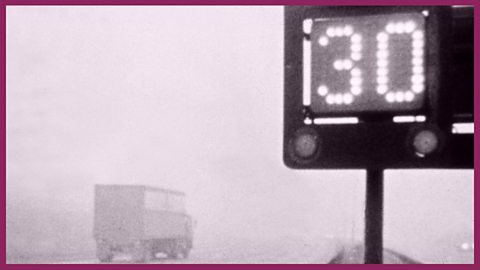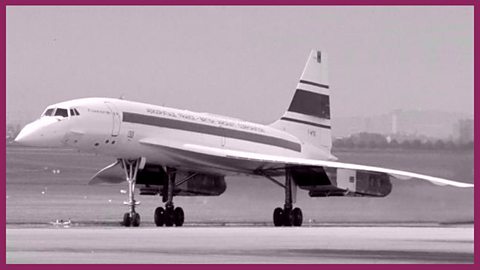REPORTER: Well, the time is just 10.58 and Britain's Hovercraft is just about to reach the beach at Dover harbour now. She's arrived…and she's come to a standstill on the beach. We're jumping down onto the shingle to see her. Some hundreds of people have converged here. She was expected to arrive at Shakespeare Beach, but the Hovercraft has in fact arrived in Dover harbour, near the Prince of Wales jetty. She came in quite swiftly, she's lying here now, 30 feet long, 24 feet wide, and two very wet-looking men, who travelled on the deck or fuselage, or whatever we can call it, have just stepped off. We'll just see if we can have a word with Peter Lamb. What sort of a ride did you have, Mr Lamb?
PETER LAMB: Oh, we had an excellent one, really good.
REPORTER: How long did you take?
LAMB: Sorry, you'll have to speak up.
REPORTER: How long did you take?
LAMB: I should think about 2 hours, near enough. We refuelled just outside the harbour.
REPORTER: Is that longer than expected?
LAMB: Oh yes, we didn't have much following wind…
REPORTER: So, your average speed was about what? 10 knots?
LAMB: Oh no, a bit more. I should say about 15, just under 15, about 13.
REPORTER: Well, thank you very much and I congratulate you.
25 July 1959. Hovercraft makes her maiden voyage across the English Channel.
Hovercraft was the brainchild of British engineer and inventor, Christopher Cockerell, although earlier inventors had also drawn designs for air cushion vehicles. Cockerell came up with the idea for his Hovercraft in the mid 1950s, when he was thinking about increasing a boat's speed by reducing the friction as it travels through the water. His invention was described as a cross between an aircraft, a boat and a land vehicle, which hovers just above the water on a cushion of air and was dubbed a 'man-made flying saucer'. He first tested his 'hover' theory using a cat food tin inside a coffee tin and an industrial air blower and pair of kitchen scales!
It took several years for his design to be accepted and built, but the Hovercraft was finally launched in the Solent on 11 June 1959. Its first crossing of the English Channel from Calais to Dover took place on 25 July 1959 and took 2 hours 3 minutes. On this maiden voyage the pilot was Captain Peter Lamb, with John Chaplin as navigator and Christopher Cockerell as (in his own words) 'moveable ballast'.
Since that first voyage, more than 80 million people and 12 million cars have crossed the Channel by Hovercraft. The cross-channel service was terminated in October 2000, due to competition from ferries and the Eurotunnel, although Hovercrafts still operate between the Isle of Wight and Southsea.
The image shows Hovercraft SR-N1 arriving in Dover after her maiden voyage across the Channel.
Play next
Motorway madness. video
January 1969. Safety on the new M1 motorway.

Motorway madness. video
January 1969. Safety on the new M1 motorway.

Concorde's maiden flight. video
1969 - Concorde 001 makes her maiden test flight in Toulouse, France
